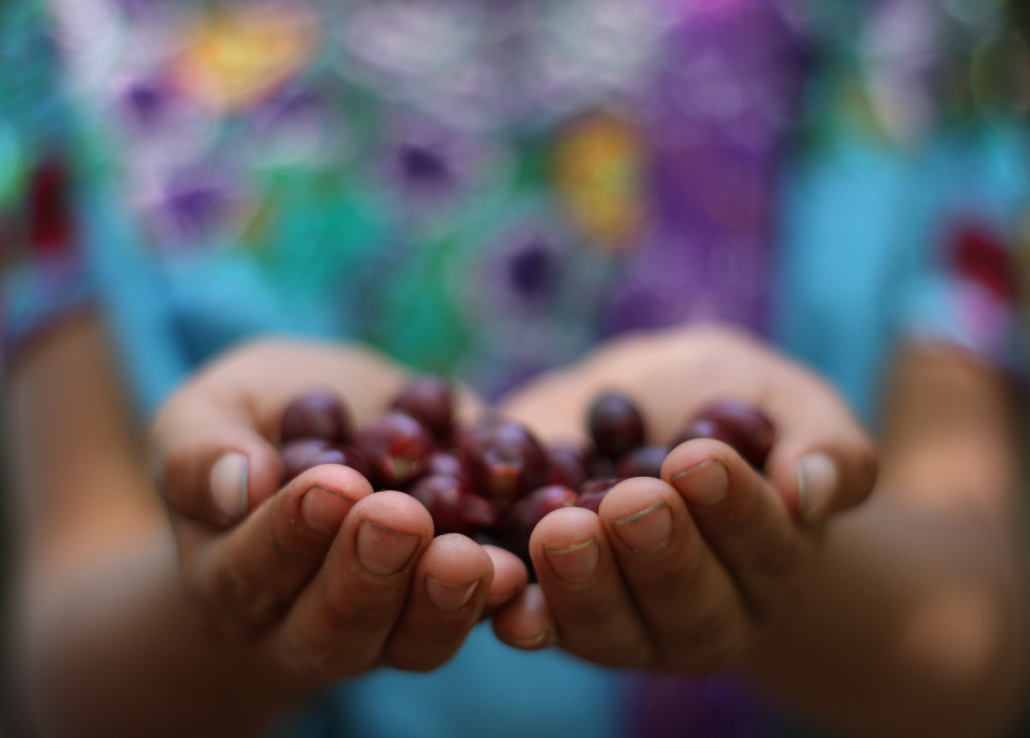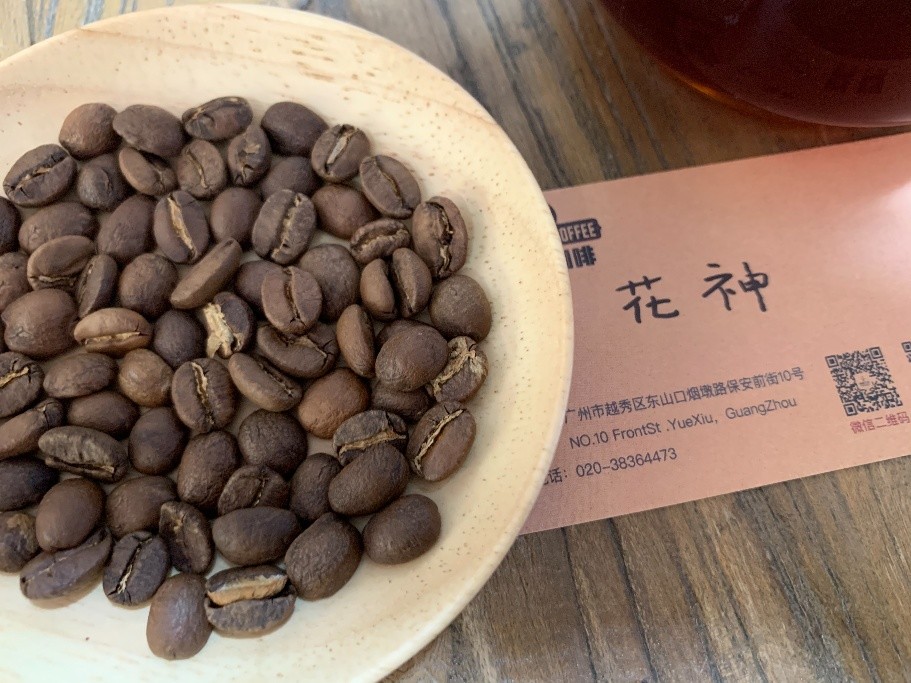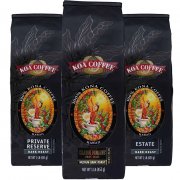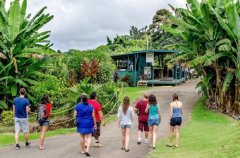What are the characteristics of Guatemalan coffee beans that are best for the benefit of fair trade?
One of Equal Exchange's partners in Guatemala is Manos Campesinas (Farmers Hands). The organization was founded in 1997 by 620 farmers from six cooperative organizations and now has 1073 members in seven cooperatives in the provinces of San Marcos, Xartnango, Rita Hulau and Solola. Most of these farmers own less than two-quarter acres of coffee each. In their first season (1997-1998), Manos Campesinas exported a container of coffee. For the next harvest, they exported four containers. Over the next three years, their exports increased to six, nine and thirteen containers, respectively. In 2003, they exported 16 containers, accounting for 40% of the total output. Considering that the fair trade price of coffee in that year was $1.26, while the (unfair) market price was 60 to 70 cents 13, the improvement in the lives, health and nutrition of coffee farmers became obvious.
Guatemala has eight main coffee producing areas, all of which have slightly different conditions, but most of them are very suitable for growing Arabica coffee trees. The high altitude of the plantation (1600 to 16400 feet) promotes the slow ripening of cherries and produces complex, full-bodied coffee. The level of acidity depends on the level of humidity, but most beans have strong flavors of chocolate, fruit and flowers.
If you are worried about mycotoxins and mold, Guatemalan coffee beans are your best choice. Most growers rely on the wet process to remove the flesh before the cherries are dried. This process may not completely eliminate toxins, but it does reduce the risk of pollution.

If you are serious about Qianjie Coffee, then you should already know the history and current situation of Guatemalan coffee beans. Here is how you can find the best Guatemalan coffee:

It's 100% Arabica coffee. Although there is no mention of any law prohibiting the cultivation of Robusta, the best varieties depend entirely on Arabica coffee beans. These trees may be harder to grow, but the Java they produce is tastier and has no strong bitter or sour taste.
It comes from a single source. Blended coffee is always cheaper and easier to get, especially when you match Guatemalan beans with Brazilian beans or Colombian products. The problem is that high concentrations of "stuffed" beans can easily overwhelm the authentic taste of Arabica coffee grown in Antigua or Huehuetenango. If you want to know about Guatemalan coffee, choose a single-source variety that highlights local flavors rather than masking them.
It's whole beans. If you don't have a grinder, buying pre-ground coffee powder is your only choice. Nevertheless, we always recommend choosing the whole bean to achieve the best taste. In addition, you can use different grinding settings for espresso machines, cold-extracted coffee or Philharmonic pressure. The pre-grinding version does not provide the same level of flexibility.
It's freshly baked. Don't be satisfied with the "best use date"! Every self-respecting baker will write the baking date on the bag to let you know the freshness of the beans.
It is cool and organic. Unfortunately, you can't expect every Guatemalan plantation to take a chemical-free route. Check out our comments on USDA organic certified coffee. You will also see the seal on the bag and the Fairtrade logo. There are some particularly satisfying things about coffee. It is good for you and the earth.
Important Notice :
前街咖啡 FrontStreet Coffee has moved to new addredd:
FrontStreet Coffee Address: 315,Donghua East Road,GuangZhou
Tel:020 38364473
- Prev

Introduction of Hawaiian Coffee Bean Flavor characteristics of Hawaiian KONA Coffee Bean producing area Information
What is Kona coffee? Kona Coffee is a world-renowned producer of Hawaiian gourmet coffee. Coffee beans found on the big island grow in South Kona-also known as the Kona Coffee Belt. On this side of the island, the climate and geography are very suitable for growing coffee. The best Kona produces clear, sweet, low-acidity cups.
- Next

Hawaiian Coffee Plantation introduces the best time for Kona Coffee Farm trip to explore coffee factories
100% pure Kona coffee is a rare commodity grown only in North Kona and South Kona. The Hualalai volcano on the slopes of Kona has high altitude, continuous clouds and fertile volcanic soil to create an ideal environment for harvesting this unique Hawaiian coffee bean. Kona has hundreds of coffee farms, from the art town of Holualoa to Kealakekua, many of which offer tours to the public.
Related
- Detailed explanation of Jadeite planting Land in Panamanian Jadeite Manor introduction to the grading system of Jadeite competitive bidding, Red bid, Green bid and Rose Summer
- Story of Coffee planting in Brenka region of Costa Rica Stonehenge Manor anaerobic heavy honey treatment of flavor mouth
- What's on the barrel of Blue Mountain Coffee beans?
- Can American coffee also pull flowers? How to use hot American style to pull out a good-looking pattern?
- Can you make a cold extract with coffee beans? What is the right proportion for cold-extracted coffee formula?
- Indonesian PWN Gold Mandrine Coffee Origin Features Flavor How to Chong? Mandolin coffee is American.
- A brief introduction to the flavor characteristics of Brazilian yellow bourbon coffee beans
- What is the effect of different water quality on the flavor of cold-extracted coffee? What kind of water is best for brewing coffee?
- Why do you think of Rose Summer whenever you mention Panamanian coffee?
- Introduction to the characteristics of authentic blue mountain coffee bean producing areas? What is the CIB Coffee Authority in Jamaica?

